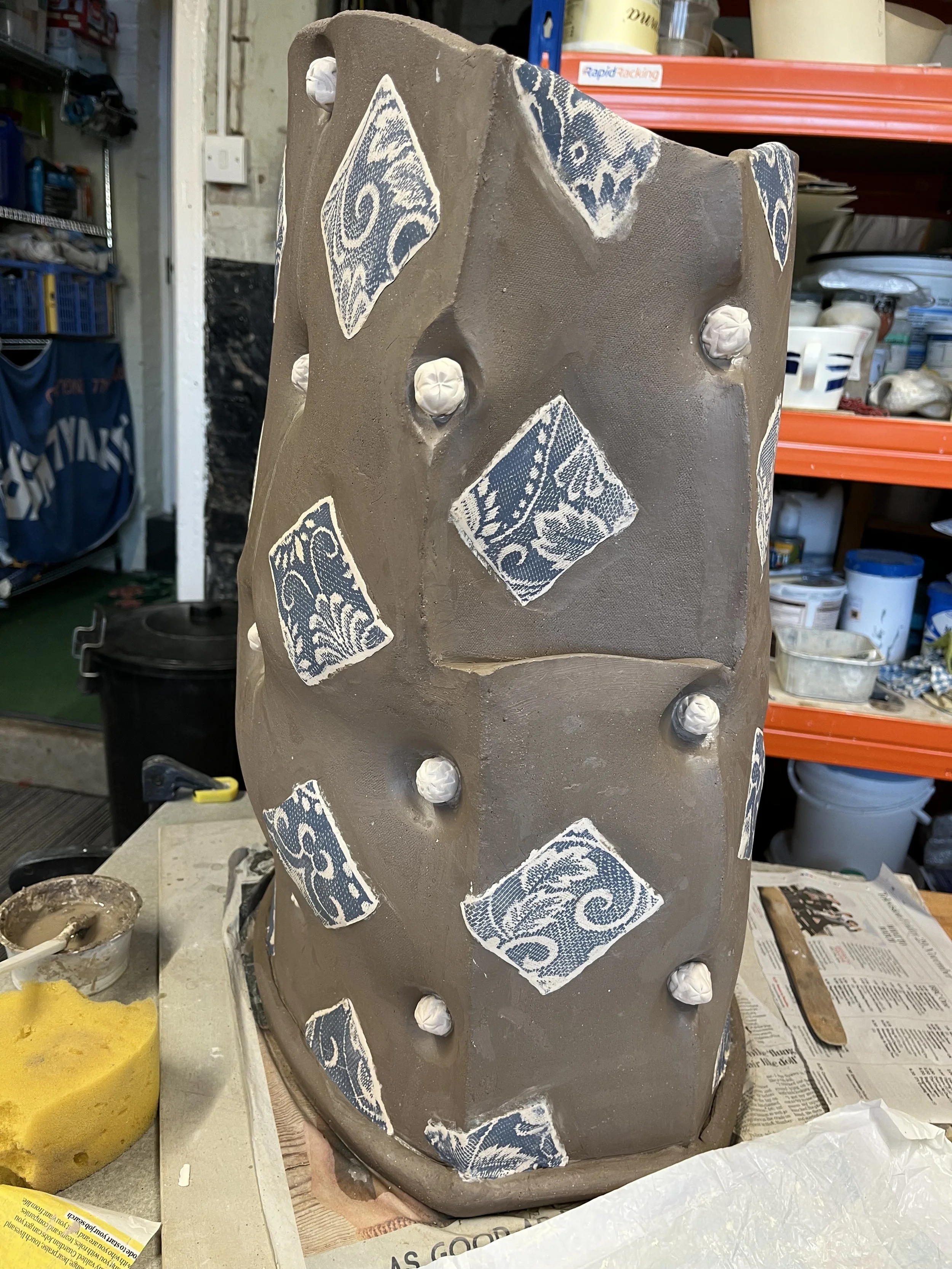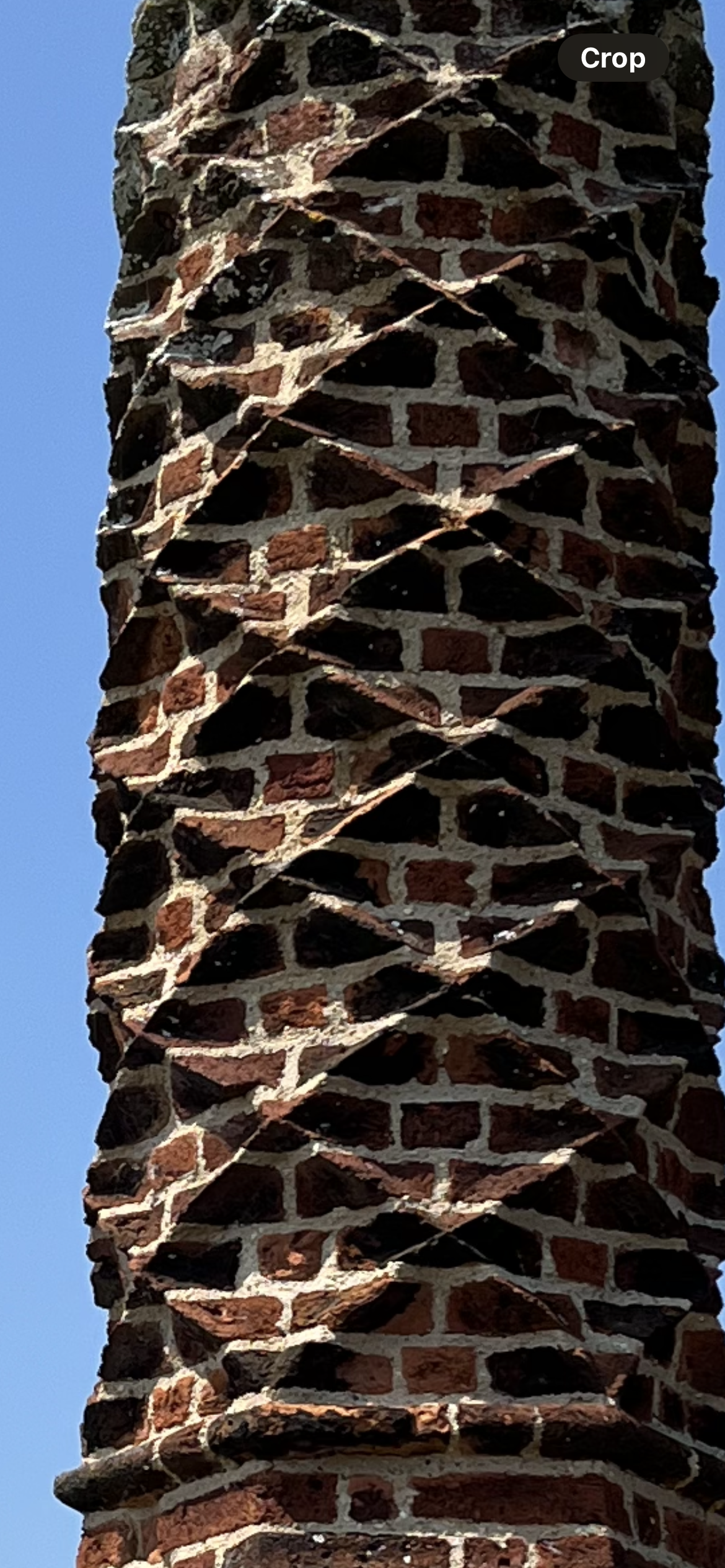The daylight hours are gradually getting longer but it is still mighty cold in the studio and pieces are taking a while to dry out. Slabs stiffen more slowly which can be a good thing because it is giving me the time to consider how the pieces should be assembled.
The clay is a combination of Earthstone’s Crank Body with their Porcelain Body Paper Clay which I get from CTM Potter Supplies, who are a terrific team to deal with. Cannot recommend them highly enough. https://www.ctmpotterssupplies.co.uk/earthstoneclaysdirect.html
These 2 pieces are a step away from what you will have seen me put out there at the shows last year. The scale won’t be a real surprise, these are on the large end of my works - the ones I am sometimes asked if they are for keeping umbrellas in. I usually work using a white clay which has a high percentage of Molochite in it, Architecture Clay. I like the evenness I get with the surface and it is very receptive to the ways that I print onto and into it. The Crank Clay is going to open up new ways of thinking for decoration, colour especially, and with shape. These inlays are printed onto the slabs of porcelain then cut up and inlayed into the Crank material.
The shapes of the forms come through a percolation of ideas, worked out through drawings and also in the process of assembling the forms. I struggled with the edges of one of the pieces. I had intended to work out some sort of curved planes that would have been kind of perpendicular to the walls. I did make them but came away each time thoroughly frustrated and in the end hating the result so much that I took the whole form apart and restarted it.
I thought I’d put some of the sources of my inspiration here with a few notes about what draws me to them as subject matter.
Images: top L to bottom R - Ely Cathedral, Apsley House, Guild Hall Gallery London, Guild Hall Gallery, Ely Cathedral, Carlisle Castle, Sutton Hoo, Framlingham Castle.
I love architecture, carved, decayed and weathered stone/brick - always have. The low relief carved walls I came across in Carlisle Castle https://www.theguardian.com/culture/2022/jan/30/carlisle-castle-restores-15th-century-carvings-thought-to-be-by-prison-guards and the modled surface panels of the Sutton Hoo Helmet have been a real trigger this year. The Helmet is a series of organised and detailed stories/annotations of Saxon cultural context. The Carlisle works are less orchestrated, more random. (Read the article in the link above.) I enjoyed the careful manner that images were generated they seem to respect the other carver’s work whilst having a language unique to each image - we know so little of what the imagery is about let alone who generated each one. Its a great contrast to the Gothic stonemason’s intricate carved tracery which each of which is as unique as the Carlisle but appears to follow a certain order.
From this seeming random collection of material flow the ideas; some seem to nudge each other whilst others arrive - some simply or as with the recent rebuilt piece after a struggle. I listen to music while I am making and that too, with the rhythms and lyrics has a part in the generating of forms and image patterns.











